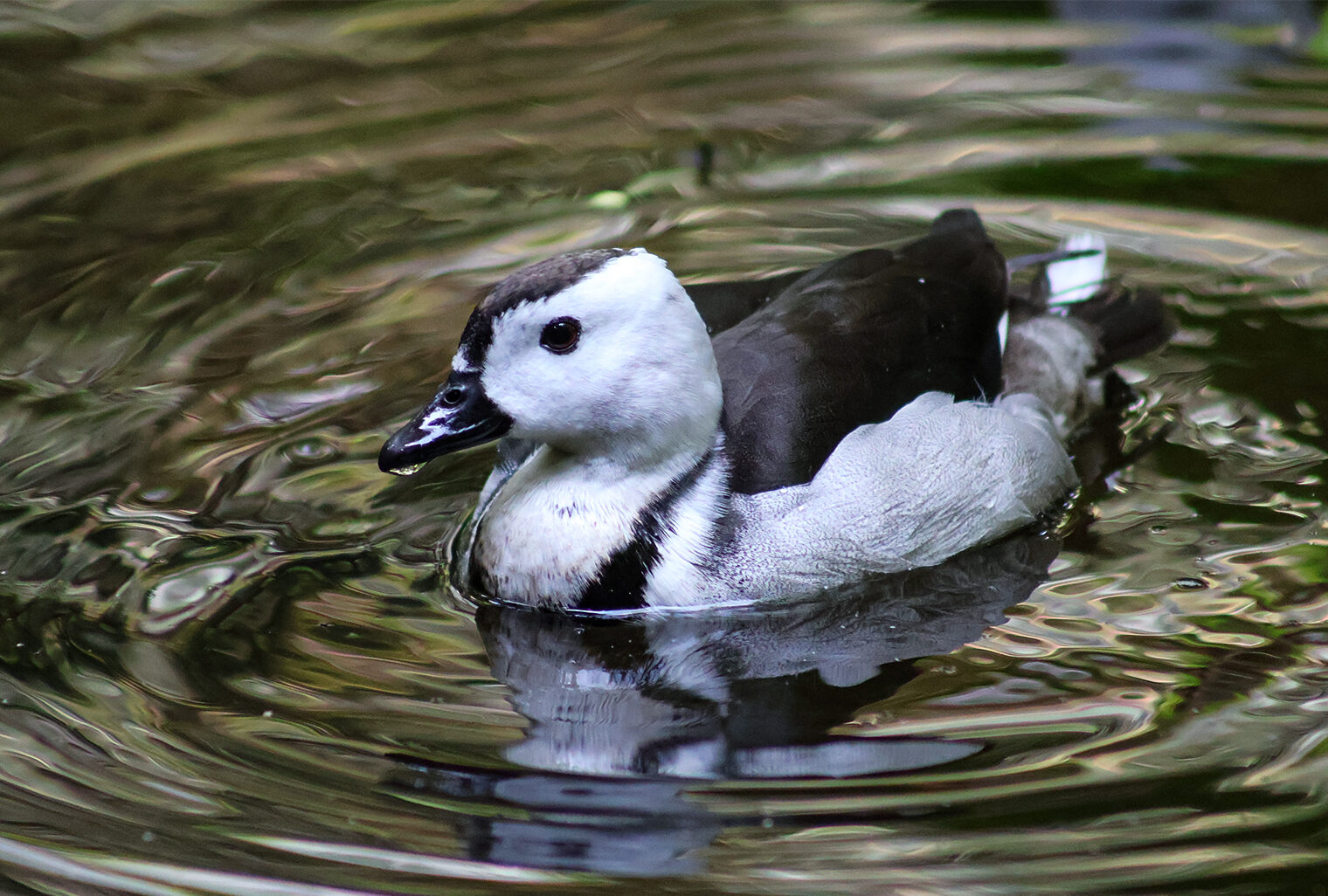I LIVE IN ASIA
The Indian pygmy goose is native to freshwater lakes and ponds throughout India, southeast Asia and Australia. They was very wide migration patterns and have been found as far east as Afghanistan in the summer.
I AM AN OMNIVORE
This small waterfowl species is knowns to eat various aquatic plants, as well as small fish, crustaceans, and insect larvae.
INDIAN PYGMY GEESE ARE SOCIAL
The Indian pygmy goose is a very social bird species. They can be found roosting and foraging for food in pairs or in larger flocks, sometimes up to 6,000 individuals.
TINY BUT MIGHTY
The Indian pygmy goose is one of the smallest waterfowl in the world, weighing in at only five ounces. However, they are very strong and swift fliers and are known to disperse widely in the winter months.
HELPING THE INDIAN PYGMY GOOSE IN THE WILD
The Indian pygmy geese at the Fort Wayne Children’s Zoo are enrolled in the Species Survival Plan (SSP). SSP is a program implemented by the Association of Zoos and Aquariums (AZA) to help ensure a genetically viable population exists.
I AM IMPORTANT TO MY ECOSYSTEM
The Indian pygmy goose plays an important role in the ecosystem through seed dispersal and keeping certain fish and invertebrate species under control.

